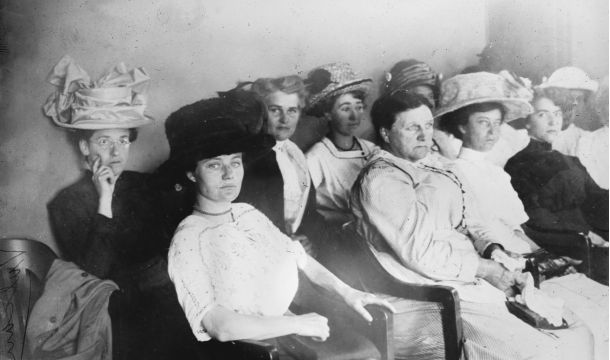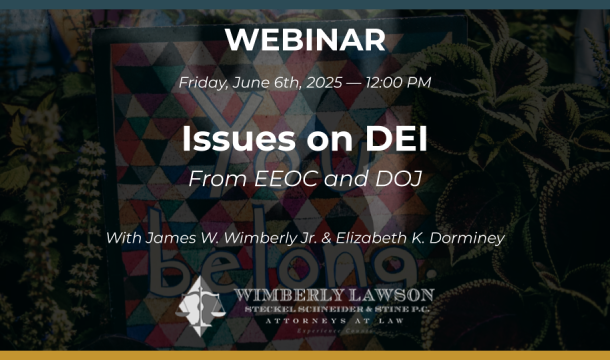In a 6-to-3 decision published January 13, 2022 the U.S. Supreme Court has stayed implementation of an Emergency Temporary Standard (ETS) proposed by the Occupational Safety and Health Administration (OSHA) that would have required the employers of nearly half of all workers in the United States either to require all of their employees to be vaccinated against COVID-19 or to wear masks and submit to weekly testing at the employees’ expense. This decision is of great consequence to many of our clients: with only the narrowest exceptions, the OSHA rule would have applied to every employer with 100 or more employees. Enforcement, with inspections and fines, would have begun immediately.
Just one week after the ETS was published, on November 5, 2021, the Fifth Circuit Court of Appeals granted a stay and barred implementation. Because so many had challenged it the matter was reassigned to the Sixth Circuit and in December, they dissolved the stay. This would have green-lighted OSHA’s vaccine mandate but for an emergency appeal to the Supreme Court. Two cases, NFIB v. Secretary of Labor, and Ohio v. Secretary of Labor, were consolidated. The Court heard oral argument this past Friday, January 7, and published its decision just 6 days later. The rapid resolution of this case bears witness to its importance both to U.S. industry and Constitutional principles of the separation of powers.
The Supreme Court’s opinion opens by noting that neither OSHA nor Congress had ever before imposed a vaccination requirement. The court found that the parties seeking the stay were likely to succeed on their claim that the Secretary of Labor lacked sufficient legal authority to impose the mandate, which was no “everyday exercise of federal power” but “a significant encroachment into the lives – and health – of a vast number of employees.” The Court found that the OSH Act did not authorize the action taken: the Secretary has authority “to set workplace safety standards, not broad public health measures.” Permitting OSHA to regulate the hazards of daily life simply because most Americans have jobs would impermissibly extend the Secretary’s regulatory authority beyond the workplace.
This decision does not strip OSHA of power to regulate COVID-19-associated risks in the workplace. “Targeted regulations are plainly permissible.” But “OSHA’s indiscriminate approach fails to account for this crucial distinction— between occupational risk and risk more generally—and accordingly the mandate takes on the character of a general public health measure, rather than an “occupational safety or health standard.”
The opinion was issued by the majority per curiam. Justices Gorsuch, Thomas, and Alito concurred, saying that “[t]he only question is whether an administrative agency in Washington, one charged with overseeing workplace safety, may mandate the vaccination or regular testing of 84 million people.” The court is not a public health agency, but it is empowered to say where the Constitution places such authority, and this decision exceeded OSHA’s mandate. In a separate concurrence Justice Gorsuch emphasized that “Congress has nowhere clearly assigned so much power to OSHA.” He pointed to the “major questions doctrine,” which had occupied much of the oral argument, and said it mattered because “It ensures that the national government’s power to make the laws that govern us remains where Article I of the Constitution says it belongs—with the people’s elected representatives.” Justice Gorsuch concluded by saying that the power to respond to the pandemic “rests with the States and Congress, not OSHA.”
Justices Breyer, Sotomayor, and Kagan dissented. To them, the danger from COVID-19 is so grave that any steps the Government might take to alleviate it are justified. Lives must be saved by any means necessary. They would read the OSH Act as conferring practically unlimited authority in the name of protecting employees from danger.
Wimberly & Lawson was honored to represent Associated Builders and Contractors (ABC) and Independent Electrical Contractors (IEC) in this litigation. Larry Stine, Jim Hughes, Kathleen Jennings, and Betsy Dorminey drafted and filed briefs with the Sixth Circuit and the U.S. Supreme Court. Wimberly Lawson is also representing ABC in a related case currently pending before the U.S. Court of Appeals for the Eleventh Circuit challenging the Biden Administration’s Executive Order requiring all Federal contractors and subcontractors, and those who work with them, to require their employees to be vaccinated. We will keep you posted as that case proceeds.
Also released on January 13 was the Court’s decision in Biden v. Missouri and Louisiana v. Becerra, consolidated cases that challenged a rule from the Department of Health and Human Services (HHS) requiring all health care facilities who accept Medicare of Medicaid payments to ensure that their employees are vaccinated against OCVID-19. In this case the vaccine mandate was upheld, by a vote of 5 to 4: the majority found that HHS was acting within its delegated authority to impose that requirement. While there are superficial similarities between the two cases, the HHS mandate was fundamentally different because HHS is charged with regulating health and health care services, especially those underwritten by public expenditures, in contrast to OSHA’s much more narrow mandate to address workplace safety.
The “vaccine mandate” cases are sure to be remembered and studied in the historical context of the pandemic response and as examples of the Supreme Court’s Constitutional jurisprudence.
This is a special alert from Wimberly Lawson Attorneys At Law. Questions? Need more information? Call Larry Stine at (404) 365-0900 or send us an email
Download alert as a printable PDF
Related Content
Get Email Updates
Recent Content

The EEOC and DOJ Issue Guidance on DEI

Considerations When Government Officials Show Up and Request to Meet with Individual Employees

How Jurors Evaluate the Fairness of an Employer’s Actions

Some of the Controversial Issues Currently Being Faced by Employers in Light of Recent Developments

Frequently Asked Questions About Recent Immigration-Related Actions

